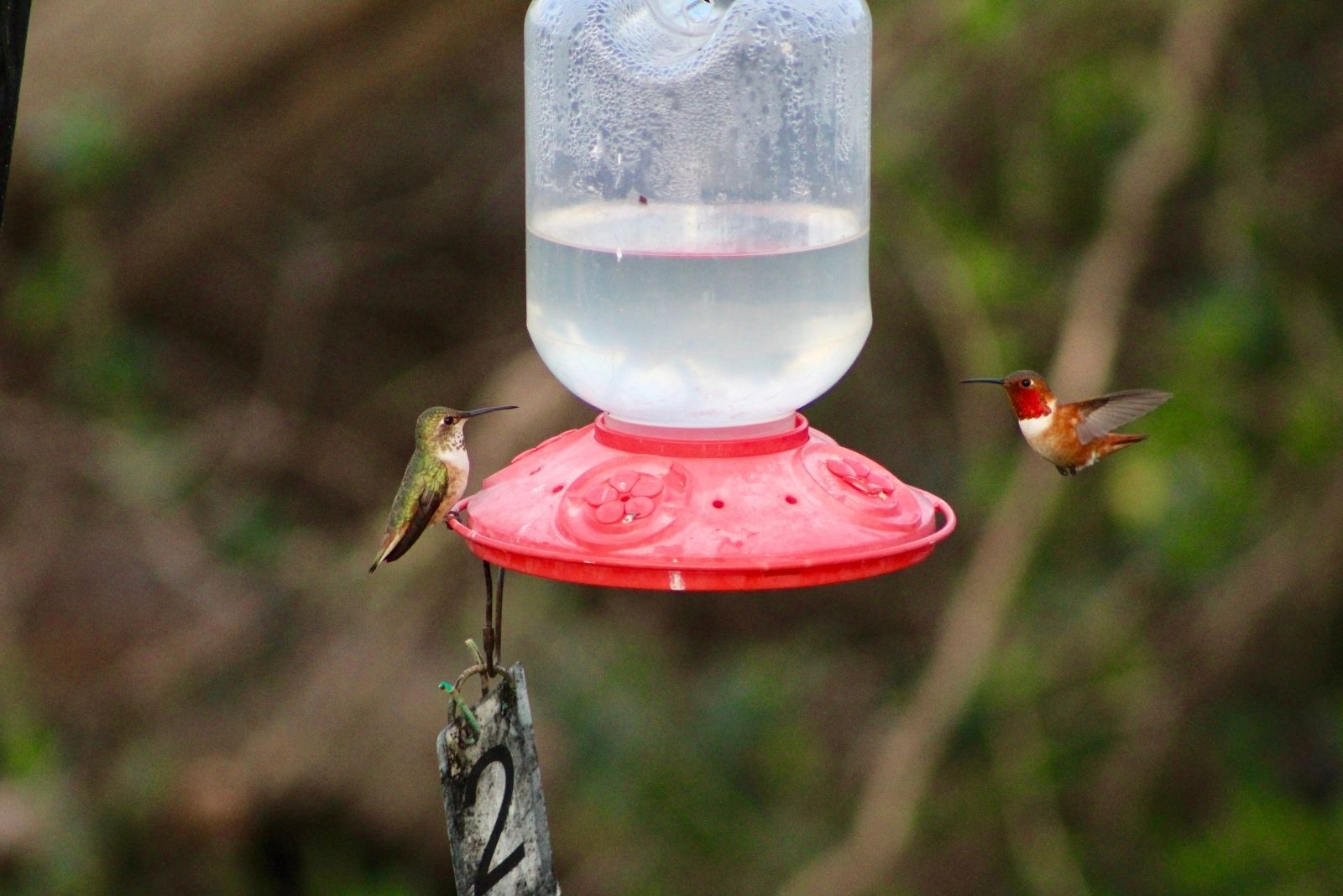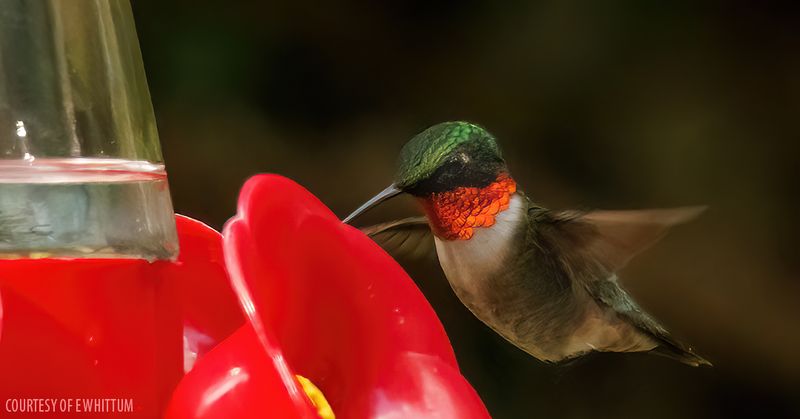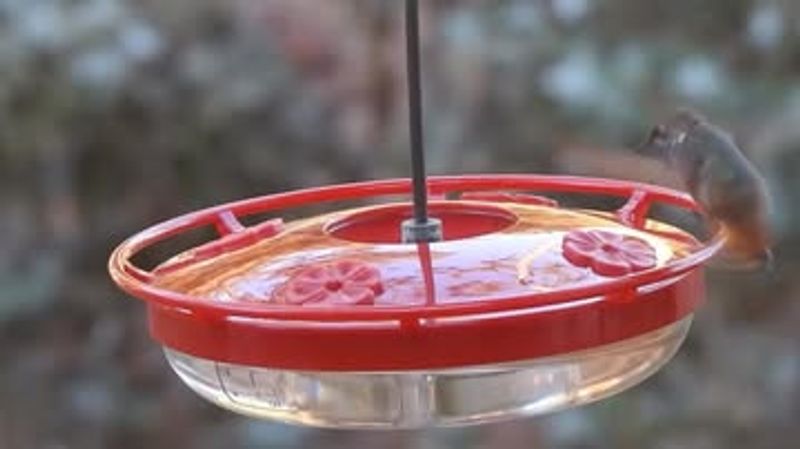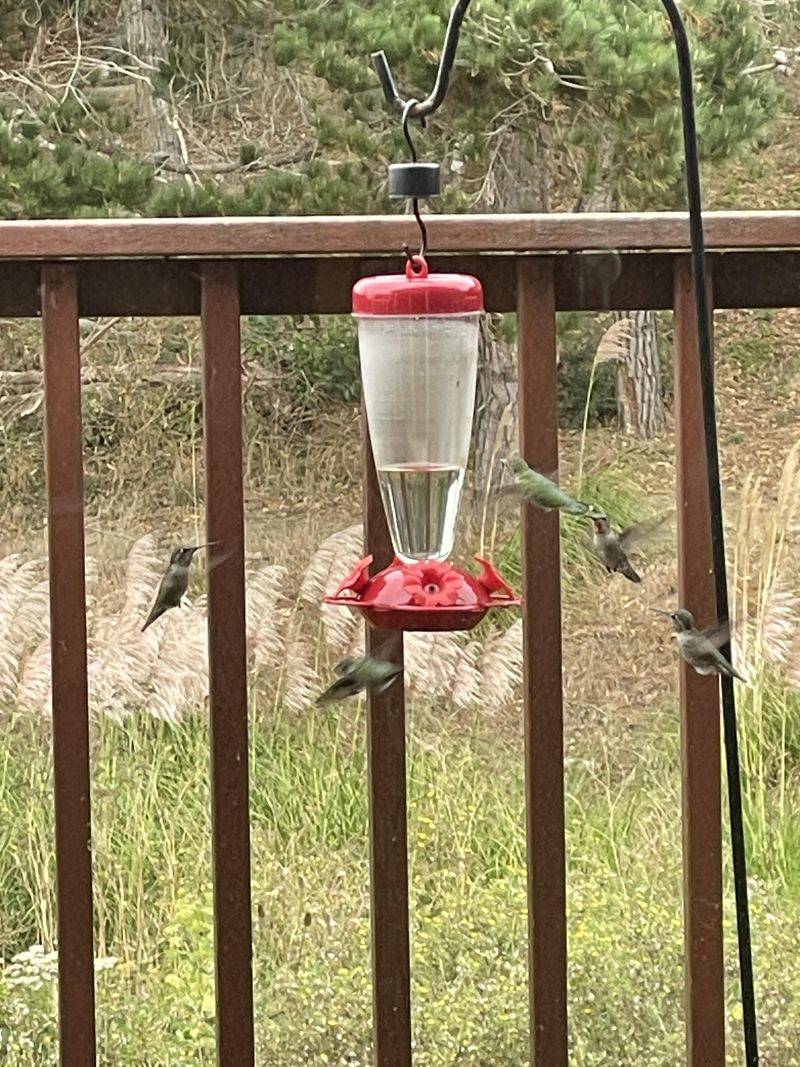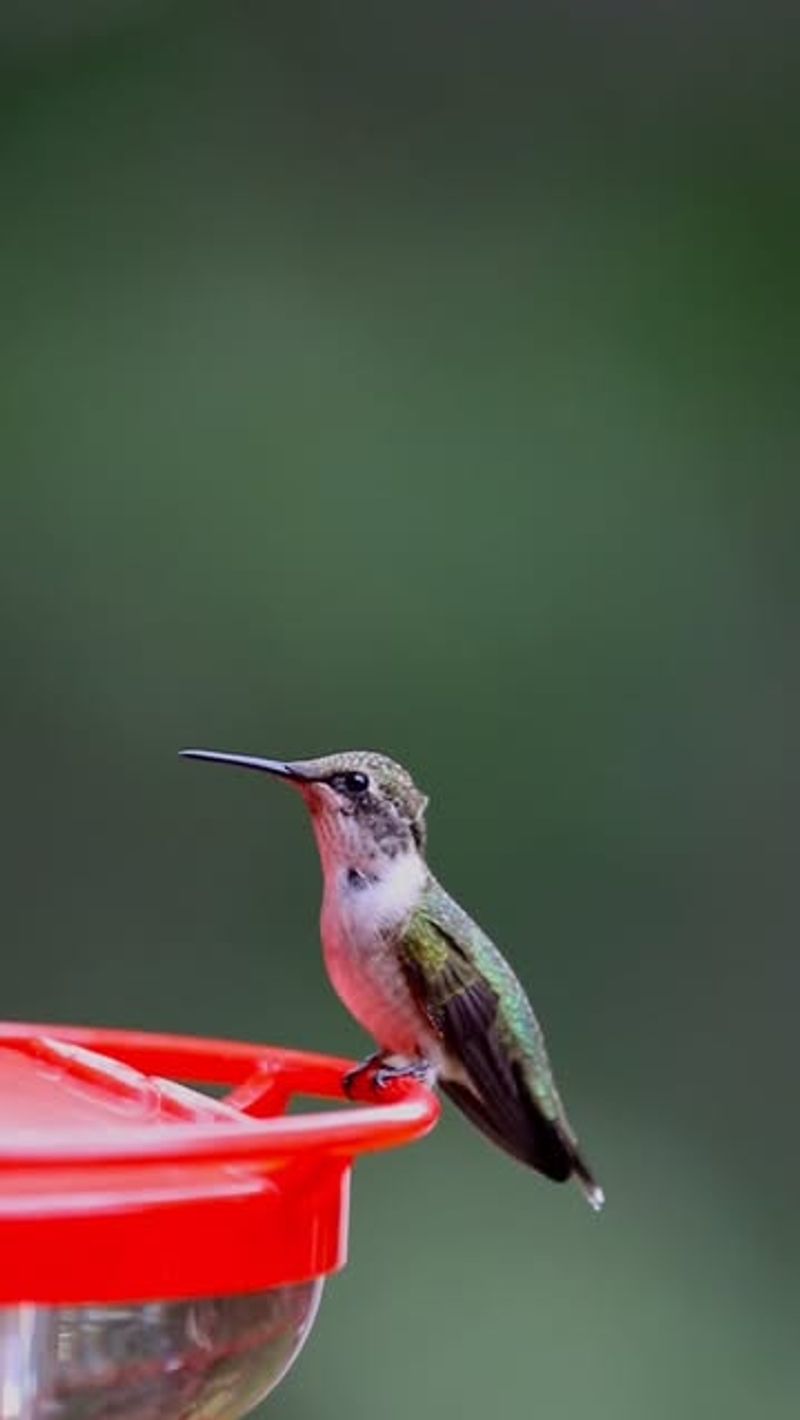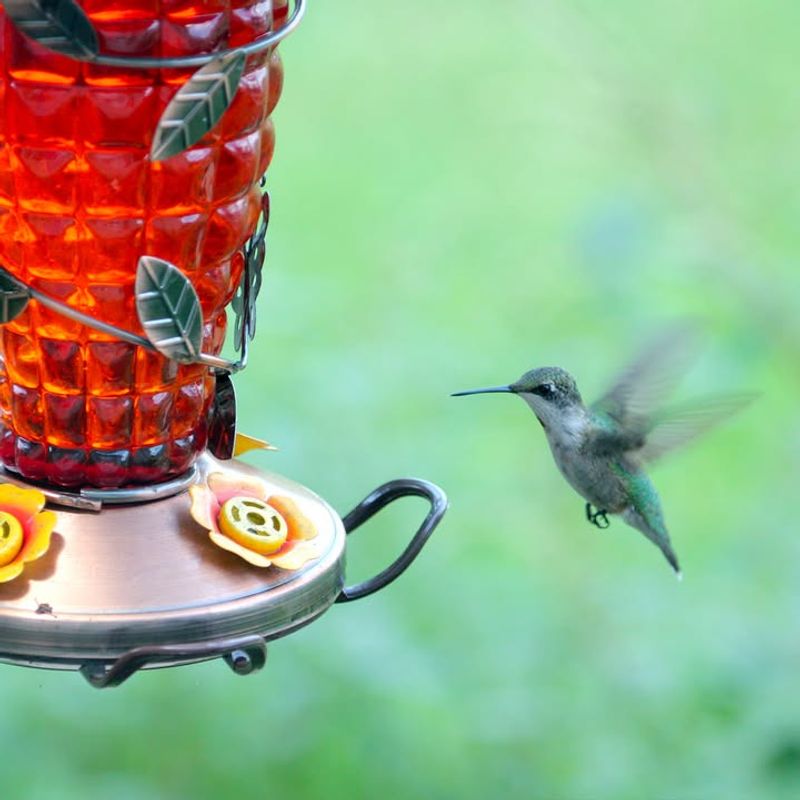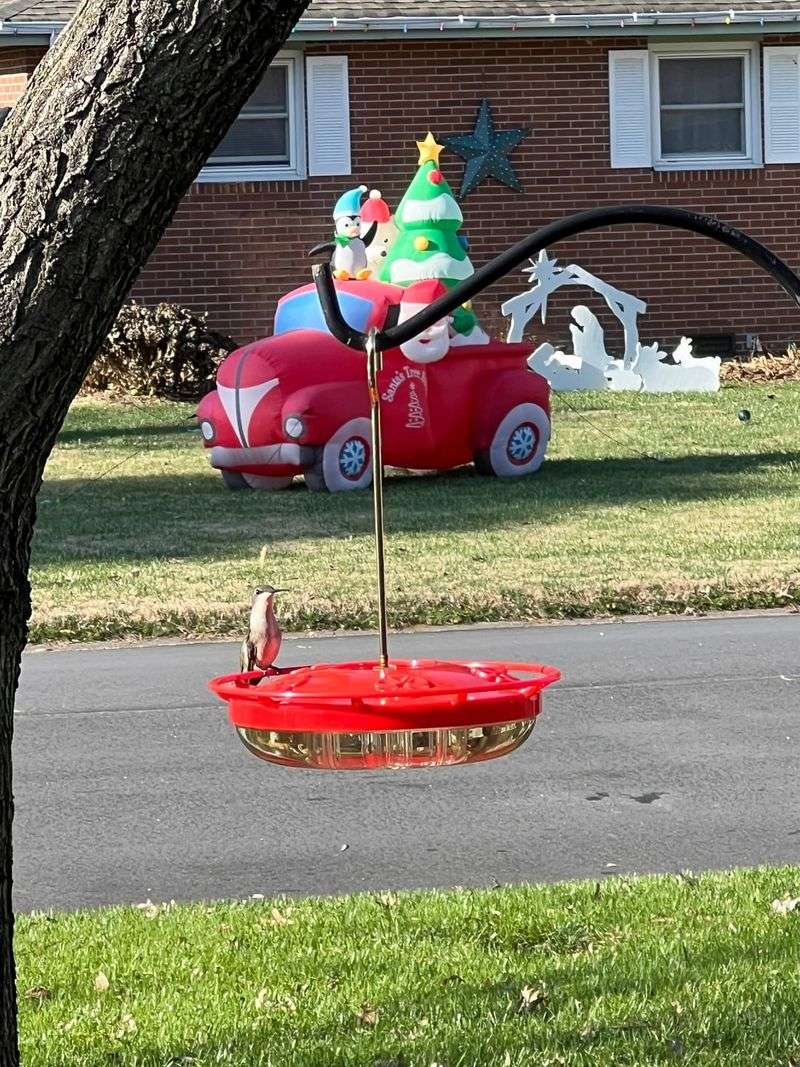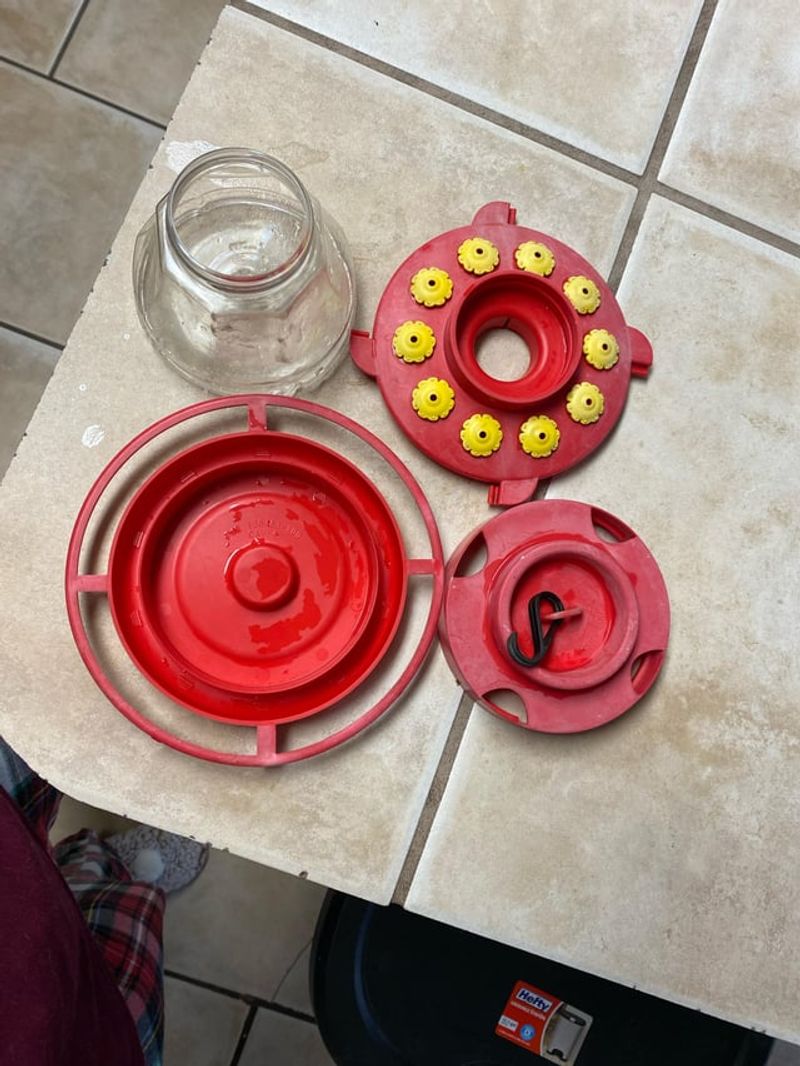Hummingbirds are amazing little visitors that brighten Georgia gardens from spring through fall. Many people worry about when to take down their feeders because they fear it might hurt the birds or stop them from migrating.
Understanding the right timing can help you support these tiny travelers without accidentally causing harm.
1. Keep Feeders Up Through Late November
Ruby-throated hummingbirds typically leave Georgia by late October, but stragglers and rare western species sometimes pass through in November. Leaving your feeders up provides crucial fuel for these late migrants.
Cold weather won’t stop hummingbirds from migrating when they’re ready. Their internal clock and changing daylight trigger migration, not feeder availability.
Early December is generally safe for removal in most Georgia regions, giving all birds plenty of time to move southward.
2. Watch For Rufous And Other Rare Species
While ruby-throats dominate Georgia summers, rufous hummingbirds and other western species occasionally appear during fall and winter months. Rufous hummingbirds are tougher than you’d think and can survive surprisingly cold temperatures.
Birdwatchers have documented these rare visitors staying through December and even January in Georgia. Your feeder might be their lifeline during unexpected cold snaps.
Keep an eye out for different markings and colors that distinguish these special guests from common ruby-throats.
3. Migration Happens Regardless Of Feeders
A common myth suggests that leaving feeders up will prevent hummingbirds from migrating south. Scientists have proven this completely false through decades of research and bird banding studies.
Hummingbirds have migrated successfully for millions of years without human help. Instinct and environmental cues drive their journey, not the presence of sugar water.
Keeping feeders available actually helps birds build energy reserves for their demanding flight to Central America and Mexico.
4. Northern Georgia Versus Southern Georgia Timing
Geography matters when deciding feeder removal dates across Georgia’s diverse climate zones. Northern mountain regions see hummingbirds leave earlier, usually by mid-October, while coastal areas host them longer.
Southern Georgia near the coast might have visitors through early November regularly. Temperature differences of ten to fifteen degrees between regions affect migration patterns significantly.
Adjust your schedule based on your specific location, keeping feeders up two weeks past your last sighting for safety.
5. Monitor Weather And Temperature Drops
Unexpected cold fronts can arrive in Georgia during October and November, making feeders even more valuable for lingering hummingbirds. During temperature drops, birds need extra calories to maintain their incredibly high metabolism.
Bring feeders inside overnight when temperatures dip below freezing, then return them at dawn. Alternatively, use feeder warmers or heat lamps to prevent freezing.
Rotating two feeders works perfectly—one outside while one thaws indoors ensures constant food availability.
6. Join Local Birding Groups For Sighting Reports
Connecting with fellow bird enthusiasts provides real-time information about hummingbird activity in your area. Local Audubon chapters and Facebook birding groups share sighting updates throughout fall and winter months.
eBird and other citizen science platforms let you check recent observations near your zip code. When reports stop appearing for two consecutive weeks, you can safely consider removal.
Community knowledge beats guesswork every time when protecting these remarkable little birds.
7. Clean And Store Feeders Properly For Next Season
Once you’ve determined all hummingbirds have departed, thorough cleaning prevents mold and bacteria from growing during storage months. Disassemble feeders completely and scrub with hot water and white vinegar or diluted bleach solution.
Rinse everything multiple times to remove all cleaning residue. Dry components thoroughly before storing in a cool, dry place away from rodents.
Proper maintenance now means your feeders will be ready when hummingbirds return to Georgia next April.

